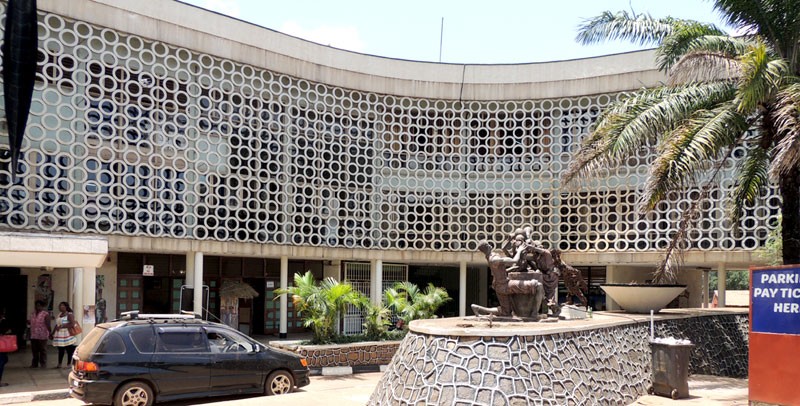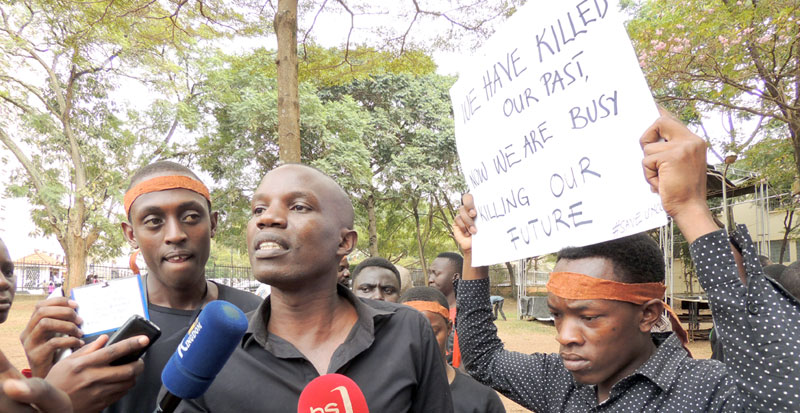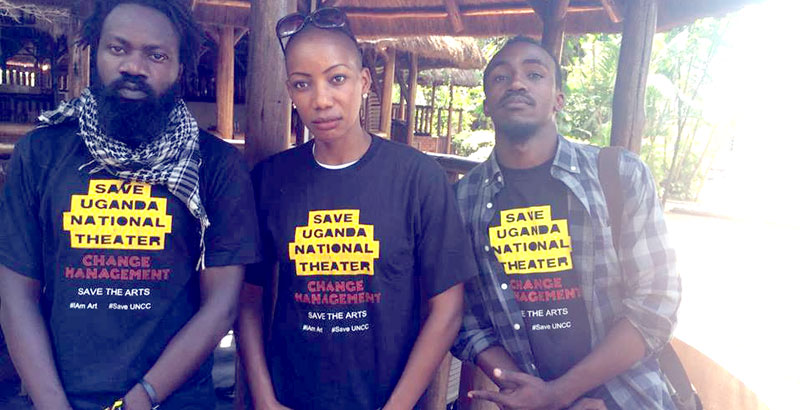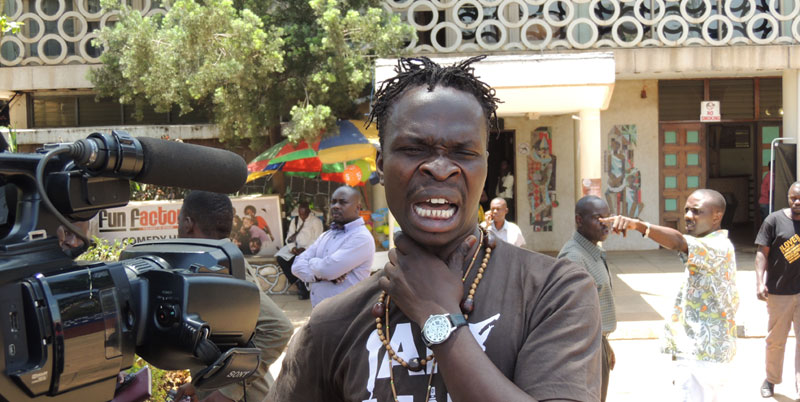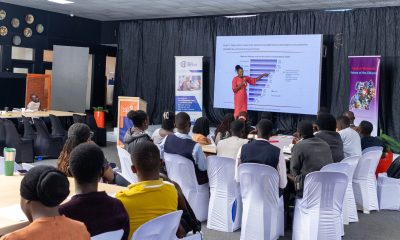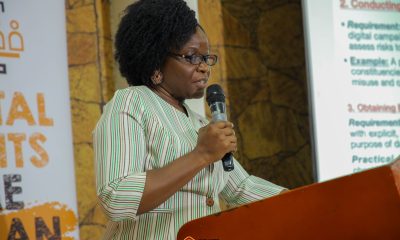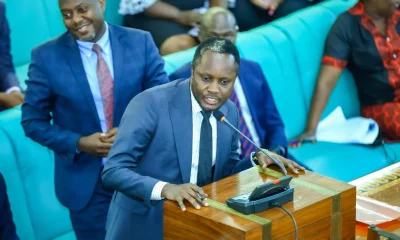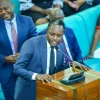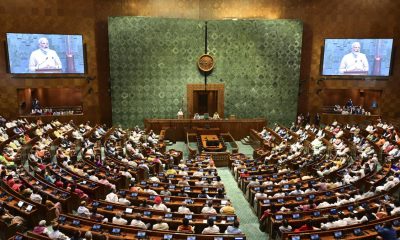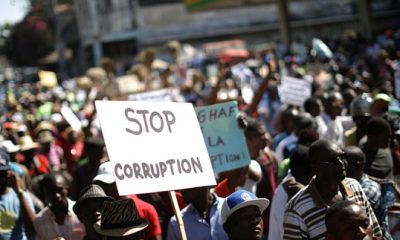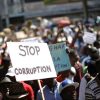Analysis
National Theatre Giveaway?
Contradictions mirror neighboring Shimoni Demonstration School
The proposed re-development of the Uganda National Cultural Centre (UNCC) popularly known as the National Theatre and one of the most outstanding pieces of cultural heritage in Uganda, has generated a number of serious contradictions bringing into doubt the stated intentions of the plan and raising fears that the plan will negatively affect the development of art in the country.
Contradictions
The first point of contradictions regards the proposed structure and mode of development of the Theatre.
There are two sharply contrasting plans; one was presented to stakeholders on Aug 19, Labour and Social Development Peace Mutuuzo to the Public at the Media Centre August 29, 2016.
Julius Lugaya, one of the directors at Theatre Factory, and one of the artists who attended a meeting called by PS Bigirimana on Aug 19, the PS presented an artistic impression for the redevelopment of UNCC that showed TWO TWIN towers of 20 floors each. This plan contrasts the one that was referred to by Minister Mutuuzo that indicated 14 floors being planned.
According to Lugaya, the PS says the proposed plan will preserve the existing National Theatre Building, besides creating three additional state-of-the-art auditoriums, sleeping apartments, and a parking lot for 900 cars. On the other hand, a statement made by Minister Mutuuzo at the Media centre, indicated that the current theatre is too old and needs to be overhauled or razed.
Artists such as Lugaya and Phillip Luswata have protested the plans on several grounds. They contend that the proposed redevelopment particularly the proposals to erect magnificent buildings at or besides the current National Theatre are a pack of lies only meant to excite and hoodwink Ugandans to buy the proposal, yet in actual sense the proponents of the plan are after the land.
Lugaya contends that he and several other artists do not oppose development of UNCC but rather they are opposed to the plan because it does not accommodate the current structure of the National Theatre and that it ignores other crucial challenges facing performing arts in Uganda.
“I love redevelopment, but I disagree with the two towers that are being proposed. If government really wants to develop Theatre, they should decentralize the whole project by building smaller theatres in major regions of the country instead of erecting a sky scraper in the name of a theatre,” argues Lugaya.
Lugaya also raises doubt that the proposed towers will actually leave space for theatre as alleged. This is because, as he points out, Theatres world over are rarely located in skyscrapers because they essentially are designed to be spacious with galleries, spacious stage which goes counter to the new plan of erecting concrete pillars that will have to support upper level floors suggested for accommodation purposes.
In presenting the proposed towers, the Ministry of Labour has noted that it wants to raise the standards of art in the country. But artists dismiss this argument saying that the government has ignored vital concerns expressed by artists previously, such as implementing the 1969 Act that proposed the creation of regional theatres to promote art at the grassroots level.
“They say they want to raise standards of art in Uganda but this does not exclusively mean new buildings.” Lugaya adds: “To the best of my knowledge, the structural integrity of the current UNCC building is still sound. The major problem has been mismanagement of art by the administration of UNCC.”
However UNCC Executive Director, Francis Peter Ojede, explains that the National Theatre land and properties are still intact. He also maintains that, as long as he is still the director, he will fight to protect the theatre.
Ojede says that it is false propaganda intended at tarnishing his management as he maintains that UNCC sought approval from the Public Procurement and Disposal of Public Assets Authority (PPDA), on how to proceed with soliciting for a developer; and UNCC was advised to procure a transaction advisor through a process which was duly complied with. “Nothing is for sale or sold, UNCC and the Government are planning to re-develop the theatre under PPP Act of 2015” added Ojede.
The Sunrise is aware of long-running battles between a group of artists and the management of UNCC particularly regarding the core business of the institution. As pointed out by Lugaya, the management of UNCC led by Francis Peter Ojede is preoccupied with raising revenue through increasing rental spaces contrary to the core business of attracting and promoting theatrical performances.
“The ED is making diversionary statements that we as artists are fighting government and that we have failed to raise money to run the institution. These are wrong statements. We have not been consulted before about redeveloping the National Theatre. The first meeting we’ve had was on August 19, 2016 when PS Bigirimana presented to us the plan.”
Gov’t wrong on unilateral approach
According to Jack Sserunkuuma, Uganda National Cultural Centre (UNCC) was built with cash contributions from individuals and institutions such as the late celebrated playwright Wycliffe Kiyingi, the Queen of United Kingdom, the government of Uganda among others. As such, the management of the institution was placed under a Board of Trustees.
According to Lugaya, it is a mistake for government to unilaterally propose to redevelop the institution without prior consultations with representatives of the original trustees or artists.
Members of the Board as well as Management of UNCC insist that the government does not have any intentions of giving away the theatre but rather to develop it. They further argue that the current state of the institution is backward looking and is counter the aspirations of the government.
UNCC board member, Sam Okello told The Sunrise that the current facility is too old and congested. He argued that in its current state, the National Theatre cannot host major events because of its single auditorium. Inaugurated in 1959, the National Theatre Auditorium sits 377 people.
Minister Mutuuzo also dismissed talk of possible land grab by saying the new facility will revert back to Ugandans after the investor has recouped his/her investment.
Even with the complexity that is anticipated, UNCC Executive Director Peter Ojede maintains that construction work is set to commence this year.
The proposed National Theatre redevelopment bears worrying similarities with a neighbouring project at the former Shimoni Demonstration Primary and Teacher Training School.
The government allegedly allocated over 14 acres of prime land to an Arab investor for purposes of building a Hotel to accommodate guests for the Commonwealth Heads of Government (CHOGM) meeting in 2007. The meeting ended without any structure in place. Although some building has since been erected, concerns have arisen that Shimoni land was parcelled between well-connected politicians.
Lugaya notes that the experience of Shimoni further raises fear among his colleagues that UNCC is headed in a similar direction.
Comments



